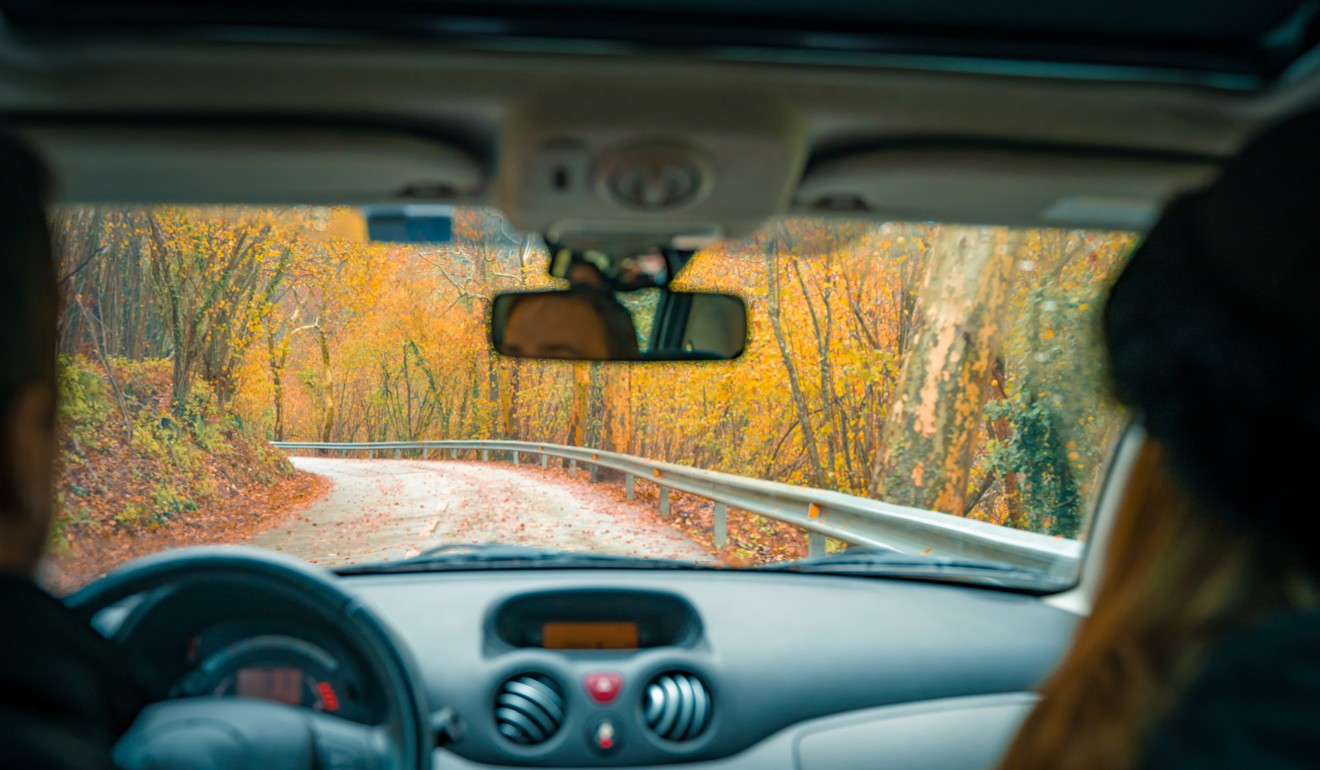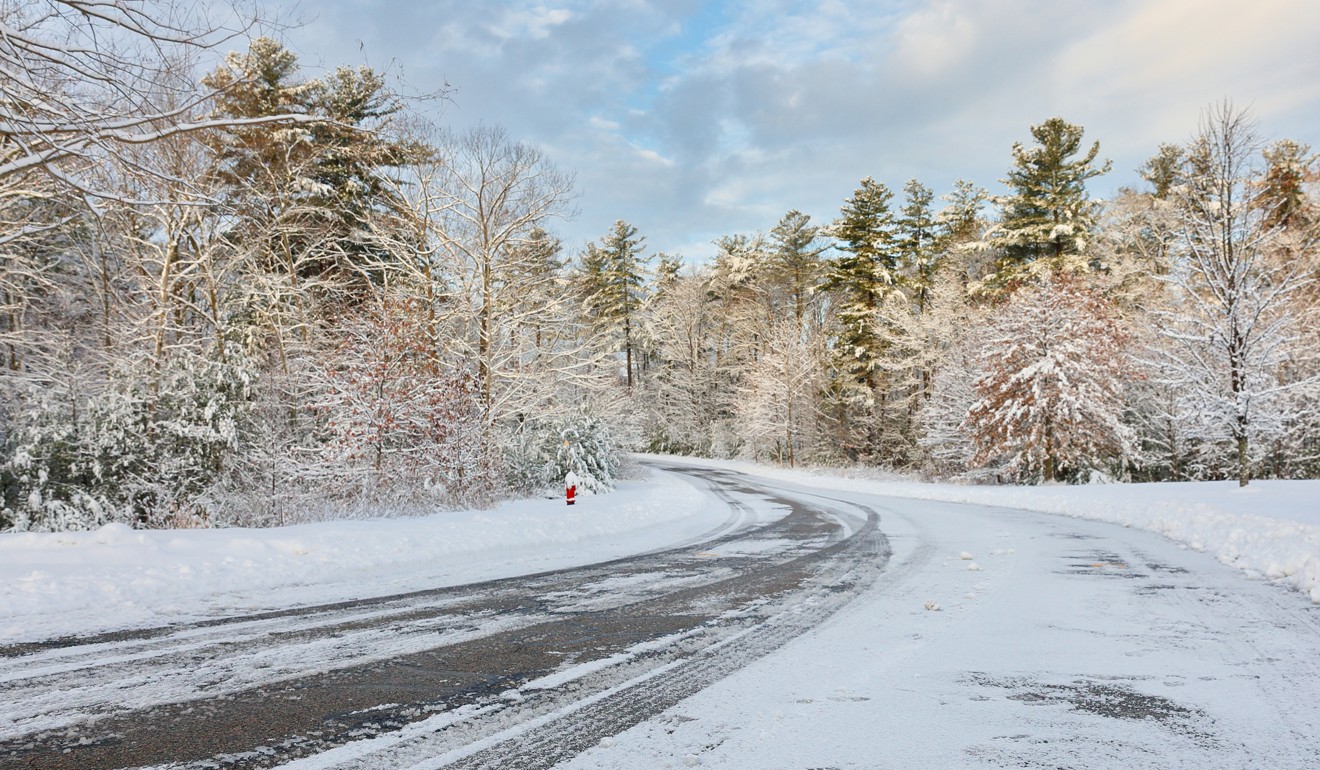
New England in the fall: the good, bad and ugly sides – is it an autumnal paradise or a tourist nightmare?
- As photo ops go, they don’t get much better than ‘Mother Nature’s pyrotechnic palette’ in the US northeast in autumn
- But be aware that New England drivers are notoriously aggressive and have been ranked the angriest motorists in America

The good
New England in autumn is no place for the colour blind. At peak foliage, Mother Nature’s pyrotechnic palette ranges from routine reds, yellows and oranges to the more flamboyant blazing gold, brilliant crimson and burnt ochre. Hickory trees transform into a gleaming bronze, sugar maples explode in fiery vermilion and sumacs go a startling scarlet. Oak trees turn a rich russet, which is also the colour of wooden barns that dot rural landscapes. (If you can’t find a white-steepled church to give your photos a focal point, a traditional New England barn is the next best thing.)
Diminishing daylight and sudden falls in temperature cause chlorophyll – which gives leaves their green colour – to break down and reveal other pigments. Location, elevation, climatic conditions and the nutrient content of soil all affect where and when colours reach their peak. The dazzling arboreal show gets going in September and takes several weeks to work its way across Maine, New Hampshire, Vermont, Massachusetts, Rhode Island and Connecticut. At the time of writing, much of Maine is in full blush.
Determined “leaf peepers” rely on interactive foliage guides, maps and apps to track down the most vivid displays, in much the same way the Japanese keep tabs on the cherry blossom cycle. Radio, television and tourist offices provide regular updates and newspapers are filled with “Here’s when the leaves will be at their best in your region” articles. The publicity drive might seem excessive but this is New England’s moment in the limelight – a brief pre-winter window when the six states rake in billions of dollars.
There are two schools of thought when it comes to planning. Some sightseers have the entire trip nailed down six months in advance, from flights and hotels to restaurant reservations and minutely detailed itineraries. Others are more spontaneous, tweaking schedules almost daily, on the basis that you can never depend on chlorophyll to behave as it should. Whichever approach you opt for, be sure to set out early. The roads are empty at dawn – give or take the odd bear preparing to hibernate. Moose and deer are in the rut (mating season) and squadrons of Canada geese head south. Slanting sunbeams penetrate pockets of morning mist lingering over lakes and dewdrops sparkle in old-growth forests.

Popular foliage drives include those along New Hampshire’s Kancamagus Highway, which snakes its way through the White Mountains, while Route 100 runs almost the length of Vermont. Lurid leaves, lighthouses and lobster lure motorists onto Maine’s coastal Route 1 and the Mohawk Trail follows a Native American trade route in Massachusetts. New England’s alpha leaf peeping towns are Stowe and Woodstock (VT) and North Conway (NH), but there are countless highways, byways and photogenic settlements that offer the thrill of serendipitous discovery.
There’s more to New England than the psychedelic sylvan spectacle, of course. Distractions range from steam train trips to hiking, biking and cable car rides. Festivals and craft fairs draw large crowds and history buffs will find plenty to keep them busy. The Pilgrim Fathers rocked up at (what would become) Plymouth, Massachusetts in 1620, creating the first permanent European colony. Many of New England’s communities were settled around that time and it’s no surprise that Boston, Massachusetts has more National Historic Landmarks per square kilometre than any other major United States city.

The Bad
There’s a lot to be said for the spontaneous approach to leaf peeping as working out exactly where and when the foliage will be at its most colourful is notoriously difficult. A cold snap in one valley and a humid spell in the next could result in differing displays. Heavy rain and high winds strip trees of leaves but so can extra dry conditions. Mild, sunny days and cool nights produce the best results.
Nevertheless, spur of the moment sightseeing has its drawbacks. New England is expensive at the best of times but prices soar during autumn, as availability diminishes. It’s unwise to leave hotel and rental car bookings to the last minute, especially for weekend travel, and visitors will discover that some small hotels insist on a minimum two- or three-night stay. Prices peak this long weekend, with Columbus Day falling on October 14, making it a good time to steer clear of holiday honeypots such as Stowe. Traffic congestion is all relative, though, and anyone arriving from New York or Boston is unlikely to be fazed by a 10-minute tailback.
It’s tempting to escape the bottlenecks by sticking to rural back roads but be warned, New England distances are large and sitting behind the wheel for days on end isn’t the ideal way to spend a holiday. Besides, even the best foliage apps and online maps are of limited use in isolated areas where Wi-fi signals are spotty. And wherever you go, you’ll still be at the mercy of local drivers.

Notorious for speeding and aggressive tailgating, New Englanders have been ranked the angriest motorists in the country. The American Automobile Association reports that “Honking, yelling and angry gestures are 30 per cent more likely to occur on New England roads than anywhere else.” The AAA also refers to incidences of drivers getting out of their cars to confront other road users, not to mention bumping or ramming vehicles on purpose. In their defence, residents have to negotiate their fair share of tourists who slow down or stop without warning to take photos.
Fall weather in New England is unpredictable. Rain, sometimes accompanied by cacophonous thunderstorms, is never far away and waterproof clothing is a must. And those colourful leaves aren’t as bewitching when they create slippery conditions, conceal road markings and gum up windscreen wipers. Visibility is also diminished by that atmospheric early morning mist and overnight frosts cause icy patches on roads.

The Ugly
Scientists and biologists have noticed a shifting of the New England foliage season due to climate breakdown. Warmer weather and later first frosts over the past four decades have delayed the colour changes. According to Boston University professor Richard Primack, the leaves used to be at their most intense from the end of September to the first week or two of October but are now peaking in mid to late October.